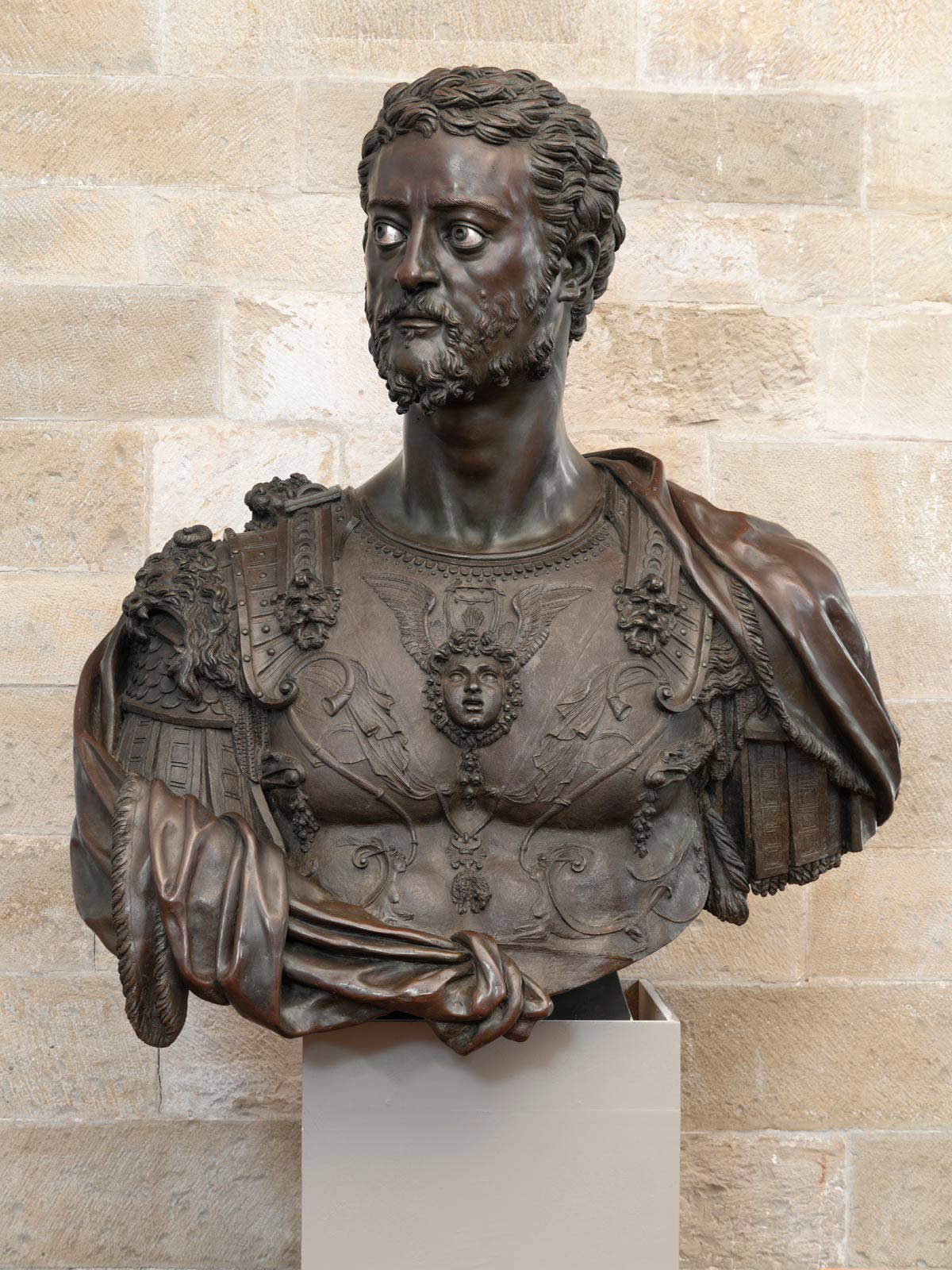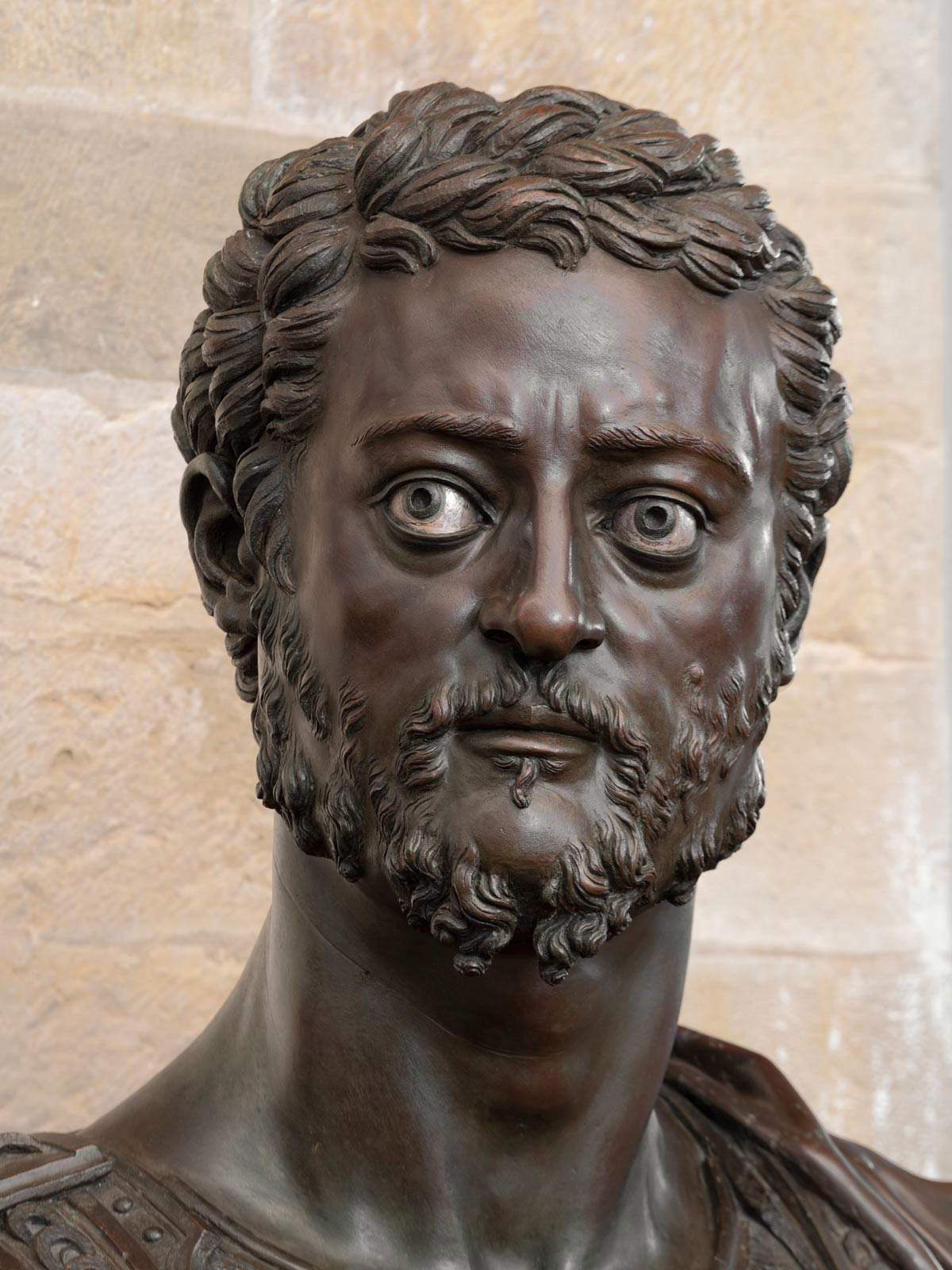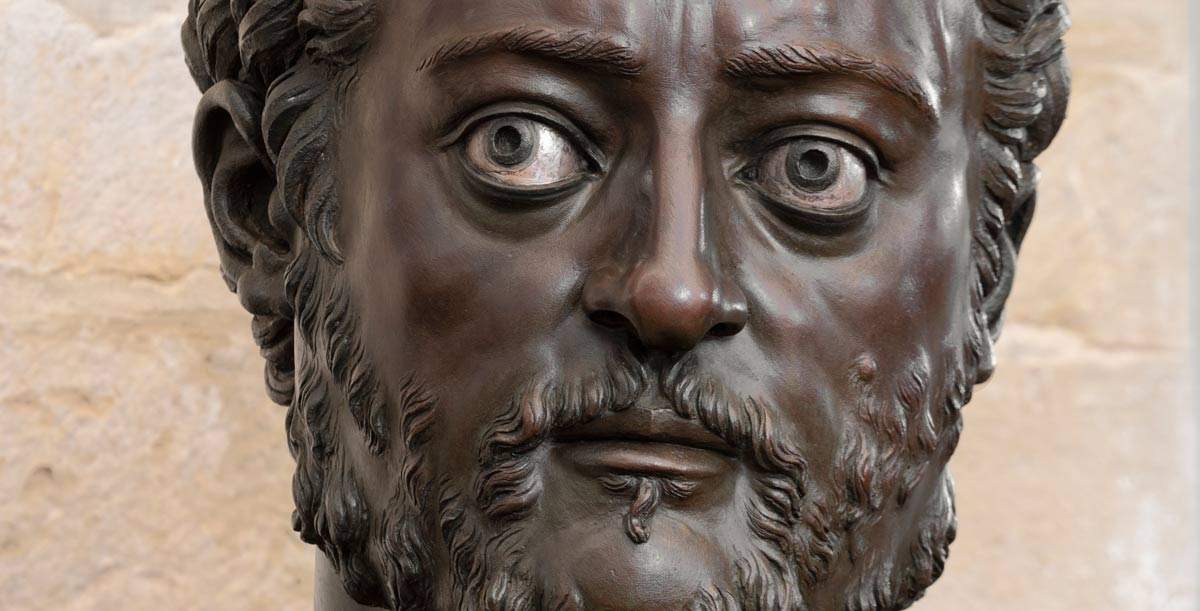Following the restoration of the bronze bust of Cosimo I de’ Medici, a masterpiece by Benvenuto Cellini (Florence, 1500 - 1571) made between 1545 and 1548 and kept at the Bargello National Museum in Florence, the natural color of the Duke of Tuscany’s eyes has re-emerged: Cosimo I therefore now reveals himself again with his icy eyes and his intense and proud gaze. Restorer Ludovica Nicolai, who was in charge of the intervention, has in fact recovered the silver foil covering the eyes: the discovery was possible thanks to the restoration that began in April, in preparation for the loan of the sculpture to the Metropolitan Museum in New York for the exhibition The Medici: Portraits and Politics, 1512-1570 ì (June 26 to October 11, 2021).
The intervention initially involved only the removal of some alloy corrosion products formed within the bust. On this occasion, stimulated by a hypothesis that had been launched by critics, the restorer (in consultation with Dr. Ilaria Ciseri curator of the collections of the Bargello National Museum, who supervised the restoration) thought to proceed with a small essay on the surface of the eyes, to see if it had been made of silver. “The attempt immediately yielded an exciting result,” says Ciseri, “concealed beneath a dark, compact layer was in fact the glow of a metal of a color other than bronze, and in a short time the restorer was able to ascertain that the metal was indeed silver. Benvenuto Cellini had thus adopted a technique used since antiquity to embellish the faces of sculptures by inserting silver foils inside the eyes.” In later centuries, perhaps between the eighteenth and nineteenth centuries, a dark patina had then been applied to chromatically equalize the eyes with the bronze surface of the bust.
Today, thanks in part to a financial contribution from the Metropolitan Museum in New York, Cosimo I’s vivid and penetrating gaze is once again visible and may be a major attraction not only for the public at the National Bargello Museum, but also for the fine selection of Medici portraits on view at the New York exhibition. Keith Chistiansen, John Pope-Hennessy Chairman of the Department of European Paintings at the Metroplitan Museum of Art, said the New York museum “is delighted to be able to present, on the occasion of the major exhibition devoted to Florentine portraiture under Cosimo I de’ Medici soon to open in June, the resounding discovery that the eyes of the bronze bust of Duke Cosimo-one of the Bargello National Museum’s greatest masterpieces, made by Cellini in 1546-47-are silvered. A discovery that reinforces the effect of the terrible gaze and affirms the legacy of Roman antiquity.”
Cosimo I is portrayed by Benvenuto Cellini, in the same years in which the artist had begun work on the Perseus for Piazza Signoria, with a richly decorated cuirass, in which the artist demonstrates his refined skills as a goldsmith: in the center is the face of Medusa, a Renaissance symbol of military and divine power, and at the bottom of the chest is the Toson d’Oro, the knightly honor Cosimo had received in 1545 from Emperor Charles V.
 |
| Benvenuto Cellini, Bust of Cosimo I. Photo by Antonio Quattrone |
 |
| Detail of the face. Photo by Antonio Quattrone |
 |
| Cosimo I’s eyes. Photo by Antonio Quattrone |
 |
| Cosimo I's ice eyes resurface. Restoration reveals silver used by Cellini |
Warning: the translation into English of the original Italian article was created using automatic tools. We undertake to review all articles, but we do not guarantee the total absence of inaccuracies in the translation due to the program. You can find the original by clicking on the ITA button. If you find any mistake,please contact us.